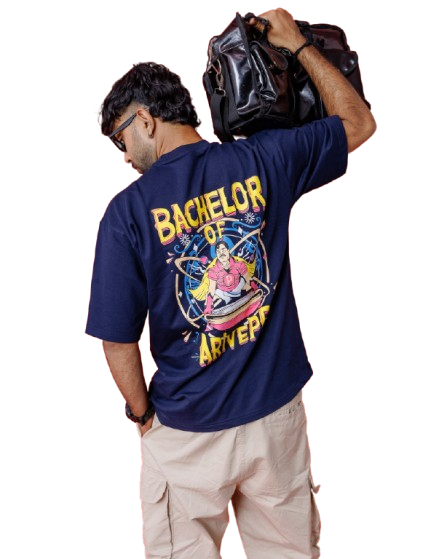Old Vs New Fashion
Old Fashion of Mangrezi: Traditional Cultural Roots with a Heroic Twist
In its early stages, Mangrezi focused heavily on bringing Kerala’s cultural heritage into the spotlight with a superhero-inspired edge. The designs were deeply connected to traditional Malayali art forms, local folklore, and iconic elements like Kathakali masks, traditional Kerala murals, and film-inspired heroes, but with minimal modern design influence. These early pieces showcased a deep reverence for Kerala’s history, culture, and identity.
- Designs: Heavily focused on traditional motifs, local art forms, and cultural landmarks, including intricate depictions of Kerala’s mythology and folk dances.
- Materials: While modern in the context of superhero themes, the materials were often chosen to reflect simplicity, comfort, and practicality, staying true to Kerala’s casual, everyday style.
- Aesthetic: The early fashion was vibrant and bold but heavily influenced by traditional Kerala colors and designs. The emphasis was more on cultural storytelling than on cutting-edge trends.
New Fashion of Mangrezi: Contemporary Innovation Meets Heritage
As Mangrezi evolved, the brand began to infuse more modern elements into its designs, balancing the deep cultural roots with global fashion trends. The introduction of minimalist designs, sustainability, and a more sleek and dynamic aesthetic marks the shift from the old to the new.
- Designs: The new designs incorporate more abstract and stylized superhero characters, combining traditional cultural elements with futuristic and more streamlined superhero aesthetics. While the focus remains on Kerala’s essence, the designs are sharper, more modern, and visually impactful.
- Materials: With an increased focus on sustainability and ethical fashion, the newer collections feature eco-friendly materials, aligning with global trends. The fabrics are chosen not only for their comfort and versatility but also for their reduced environmental impact.
- Aesthetic: The newer fashion collections have a more contemporary, minimalist vibe with bold statements. The superheroes are presented in a cleaner, more sleek design, with simplified colors, sharp lines, and innovative graphic elements that appeal to younger, fashion-forward audiences.
- Influence: While the old designs were rooted in local heritage, the new designs are more global in their appeal, reflecting pop culture and modern superhero influences while still honoring Kerala’s cultural pride. The fusion of technology and traditional art forms creates an exciting dynamic that caters to a global audience.
Key Differences Between Old and New Fashion of Mangrezi:
- Traditional vs. Contemporary Influence: The old fashion leaned heavily on traditional Malayalam culture and iconic figures, while the new fashion incorporates global trends, superhero aesthetics, and modern design principles.
- Color and Design Complexity: Earlier designs were vibrant with more intricate cultural details, while newer designs adopt a more minimalist approach, emphasizing boldness and simplicity with clean lines and graphic elements.
- Materials and Sustainability: The old fashion was focused on comfort, using simple, practical materials. The new collections, however, take sustainability seriously, choosing eco-friendly fabrics and embracing ethical fashion practices.
- Cultural Storytelling vs. Global Appeal: The early designs told stories of Kerala’s culture in rich detail, while the new designs continue to tell those stories but in a way that resonates with a broader, more global audience.
Conclusion
Mangrezi’s evolution from its early designs to its current fashion collection represents the seamless merging of tradition and modernity. The old fashion laid a foundation based on Kerala’s cultural roots, while the new fashion embraces innovation, sustainability, and contemporary global trends. In this journey, Mangrezi continues to celebrate its cultural pride while staying at the forefront of modern fashion, offering something for both those who cherish heritage and those who seek cutting-edge style.

